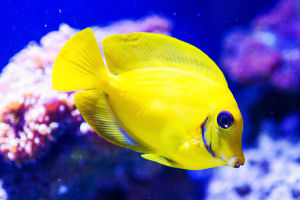The Ring-Necked Pheasant is a striking and captivating bird renowned for its vibrant plumage and captivating behavior. With its elaborate displays and distinct appearance, this bird has earned its place as one of the most iconic and sought-after game birds in various parts of the world.
The Ring-Necked Pheasant boasts a remarkable appearance characterized by its long, sweeping tail feathers, iridescent plumage, and unmistakable white neck ring. Males, known as roosters, display a stunning array of colors including metallic greens, rich chestnut browns, and fiery oranges that catch the sunlight in a breathtaking display of natural artistry.
Native to Asia, the Ring-Necked Pheasant has been introduced to many parts of North America, Europe, and beyond. Its adaptability to various environments has allowed it to thrive in grasslands, farmlands, and wooded areas. This versatile bird can be found foraging for food, nesting, and taking cover amidst the undergrowth.
Mating season unveils the pheasant's mesmerizing courtship rituals. Male pheasants showcase their prowess by performing elaborate displays that involve fanning their tails, puffing out their chest feathers, and strutting with an air of confidence. These dramatic performances are accompanied by distinctive calls that echo through the landscape, creating an enchanting auditory experience.
Ring-necked pheasants are omnivores with an eclectic diet. They feed on a combination of seeds, fruits, insects, and even small vertebrates. This dietary versatility contributes to their adaptability and survival in a variety of habitats.
The Ring-Necked Pheasant holds both cultural and ecological significance. It is a prized target for hunting enthusiasts, contributing to conservation efforts and habitat management. Careful regulation of hunting seasons and habitat preservation initiatives ensure that these magnificent birds continue to grace the natural landscape.
Despite their adaptability, Ring-Necked Pheasants face challenges such as habitat loss and predation. Encroachment by urban development and changes in agricultural practices impact their natural homes. Conservationists strive to strike a balance between human needs and preserving the habitats crucial for the survival of this splendid species.
The Ring-Necked Pheasant holds a significant place in the realm of game birds. Its exciting hunting challenges and exquisite plumage make it a sought-after target for sportsmen and women around the world. This popularity has led to numerous conservation initiatives aimed at ensuring its sustainable presence for generations to come.
Beyond its role in hunting and conservation, the Ring-Necked Pheasant has woven itself into the cultural fabric of various regions. In some cultures, the bird is associated with prosperity, beauty, and even spirituality, serving as a symbol of connection to the natural world.
The Ring-Necked Pheasant is a favorite subject of wildlife photographers. Capturing its resplendent colors and dynamic behaviors in their natural habitats offers a glimpse into the untamed beauty of the avian world.
The Ring-Necked Pheasant stands as a testament to the captivating diversity of the natural world. With its vibrant plumage, elaborate courtship displays, and adaptability, it holds a unique place in both ecological systems and human culture. As this majestic bird continues to inspire admiration and conservation efforts, its legacy as a symbol of resilience, grace, and natural splendor endures.


